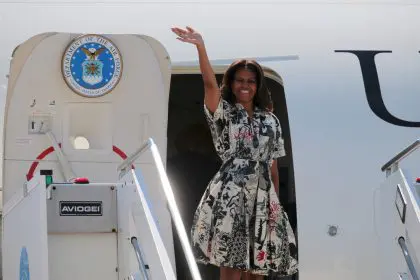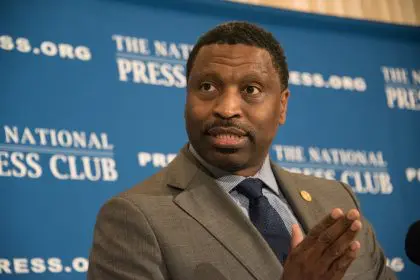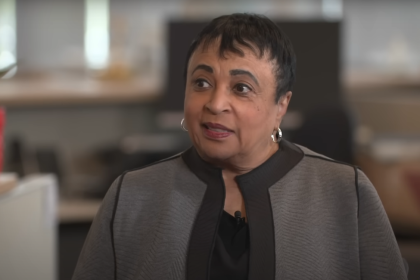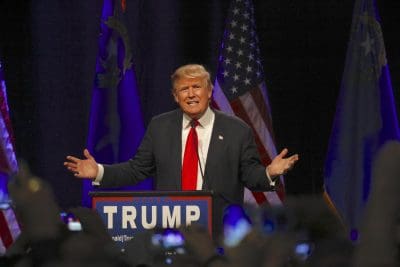A strategic pivot amid political and legal developments reshapes the race for New York City’s leadership
Breaking from tradition
Political transformation unfolds
Mayor Eric Adams has dramatically altered the landscape of New York City politics by announcing his decision to abandon the Democratic primary and instead pursue reelection as an independent candidate. The announcement, delivered through social media on Thursday, represents a fundamental shift in the mayor’s political strategy and introduces a new dynamic to the upcoming mayoral race.
Adams’ transition away from the Democratic Party machinery comes at a critical juncture in his political career. The mayor has consistently positioned himself as a pragmatic leader who prioritizes practical solutions over ideological purity, and this latest move appears designed to reinforce that image among voters who may be disenchanted with traditional party politics.
Legal victory provides new momentum
Charges dismissed as campaign reorients
The timing of Adams’ announcement follows closely on the heels of a significant legal victory. A federal judge recently dismissed bribery and wire fraud charges that had been hanging over the mayor since his September indictment. The accusations had centered around allegations that Adams accepted substantial financial benefits and luxury travel accommodations from wealthy Turkish nationals over approximately a decade.
The dismissal of these charges by U.S. District Judge Dale Ho has effectively removed what might have been a substantial impediment to Adams’ reelection prospects. The 78-page judicial order ensures that these particular legal issues cannot be resurrected or leveraged against Adams as he formulates his independent campaign strategy.
With this legal cloud lifted, Adams now faces the formidable challenge of rebuilding his political brand and reconnecting with a voter base that has demonstrated increasing volatility. The mayor has acknowledged the difficulties ahead, recognizing that his current standing would make a competitive Democratic primary run improbable given the compressed timeframe.
Navigating a changing electorate
Voter independence grows in Democratic stronghold
Adams now has approximately three months to assemble a campaign team capable of effectively engaging with New York City’s evolving electorate. While Democrats maintain numerical superiority among registered voters, recent elections have revealed a growing contingent of independent voters willing to cross traditional party lines. This trend was particularly evident during the November elections, when Republican candidates made unexpected inroads in several traditionally Democratic districts.
The mayor’s strategic calculations likely take into account these shifting demographics. By positioning himself as an independent candidate, Adams may be attempting to capitalize on voter fatigue with partisan politics while simultaneously avoiding a potentially bruising Democratic primary battle. This approach could theoretically allow him to conserve resources and political capital for the general election, where a broader coalition might be assembled.
Adams has consistently characterized his governing philosophy as one that transcends traditional political boundaries. Throughout his tenure, he has emphasized his commitment to addressing the practical concerns of working-class New Yorkers rather than adhering to ideological litmus tests. This independent candidacy represents the logical extension of that positioning, potentially appealing to voters across the political spectrum who prioritize pragmatic problem-solving over partisan loyalty.
Competitive landscape emerges
Democratic field grows as former governor enters race
As Adams charts his independent course, the Democratic primary field has expanded to include twelve candidates, most notably former Governor Andrew Cuomo. Cuomo’s entry into the race introduces another high-profile personality with substantial name recognition and political experience.
The relationship between Adams and Cuomo has been marked by tension, particularly regarding public safety policies implemented during the COVID-19 pandemic. Adams has been critical of bail reform measures enacted during Cuomo’s administration, suggesting they contributed to increased crime rates throughout the city. The mayor has also questioned Cuomo’s leadership stability, referencing the former governor’s resignation amid personal controversies.
The growing Democratic field presents both challenges and opportunities for Adams’ independent strategy. A crowded primary could potentially produce a nominee who emerges with limited consolidated support, creating an opening for an independent candidate with strong name recognition and incumbent advantages. Conversely, should a particularly strong consensus candidate emerge from the Democratic process, Adams would face the challenge of overcoming traditional voting patterns in a city where Democratic registration heavily outweighs all other affiliations.
Building a coalition beyond party lines
Appeal to working-class priorities becomes central focus
Adams’ close advisers have emphasized that his independent candidacy will focus on policy positions that address the concrete needs of New York residents rather than adhering to partisan expectations. This approach aligns with Adams’ self-presentation as a mayor who prioritizes pragmatic solutions over ideological purity.
The mayor intends to emphasize his authenticity and willingness to implement effective policies regardless of their political origin. This positioning could potentially resonate with voters who feel disconnected from traditional party politics and who prioritize specific local issues over national partisan affiliations.
Adams faces the significant challenge of maintaining his existing base of support while simultaneously expanding his appeal to independents and moderate Republicans. This balancing act will require sophisticated messaging that emphasizes his achievements while acknowledging the persistent challenges facing the city, including public safety concerns, affordable housing shortages, and economic recovery in the post-pandemic landscape.
Path forward requires strategic innovation
Three-month sprint demands rapid mobilization
With limited time before the election, Adams must rapidly assemble a campaign infrastructure capable of collecting the necessary signatures to secure ballot access as an independent candidate. This process demands substantial organizational capacity and grassroots engagement.
The mayor’s ability to articulate a compelling vision for New York City that transcends traditional political categories will prove crucial to his electoral prospects. By positioning himself as a leader committed to addressing the practical concerns of everyday New Yorkers rather than adhering to partisan orthodoxy, Adams hopes to forge a coalition capable of delivering electoral victory despite the unorthodox nature of his candidacy.
As this political drama unfolds, New York City residents will have the opportunity to evaluate an increasingly diverse field of candidates representing various perspectives on the city’s future. Adams’ independent candidacy adds yet another dimension to an already complex electoral landscape, ultimately enriching the democratic process by expanding the range of options available to voters seeking effective leadership for their city.
















